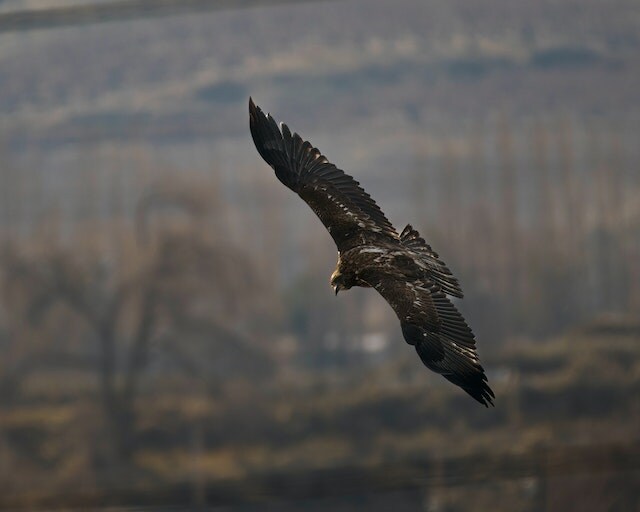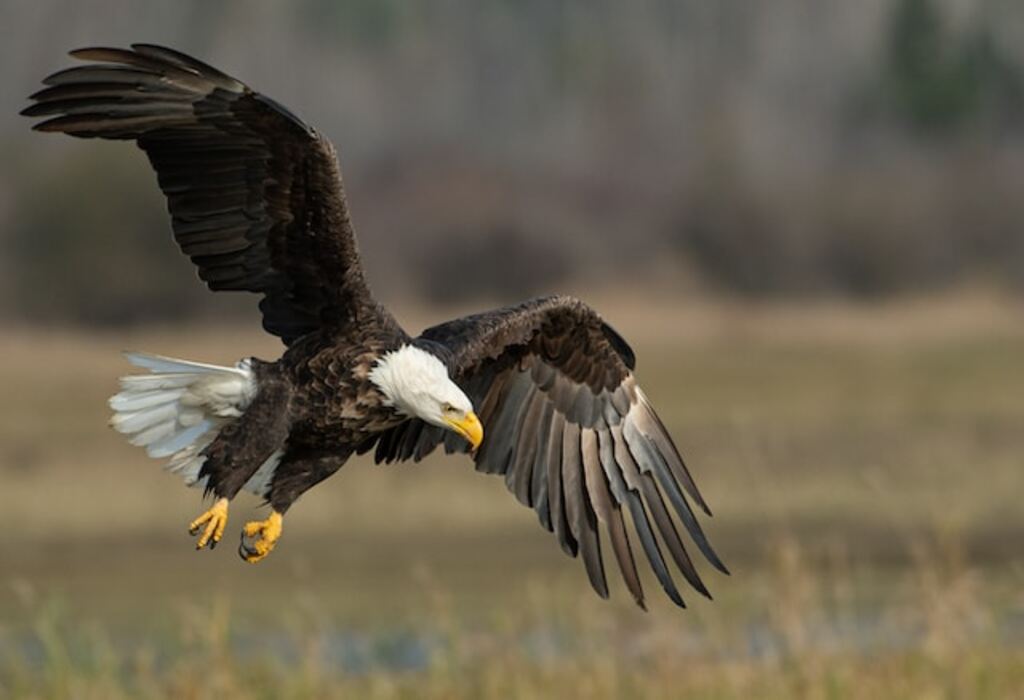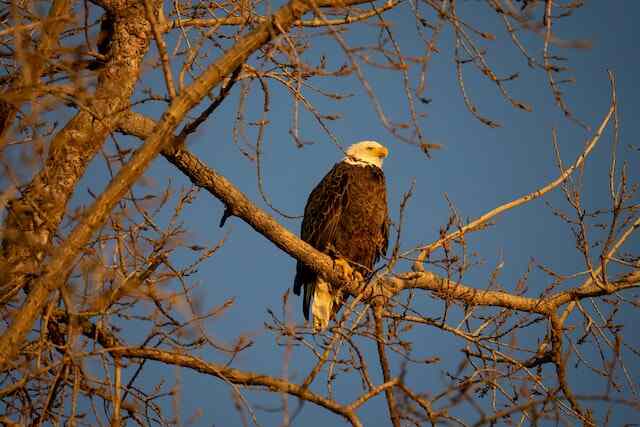Do Eagles Eat Rabbits? Buckle up, folks, because we’re about to dive into the wild world of these magnificent birds of prey and their dining habits.
If you’ve ever wondered whether these aerial predators have a taste for fluffy bunnies, the short answer is yes!
But hold your carrots, there’s more to this story. Join us as we unravel the thrilling reasons behind their rabbit rendezvous, from their razor-sharp talons to their awe-inspiring hunting techniques.
Get ready to soar into a captivating adventure!
Table of Contents
- 1 Key Takeaways
- 2 Do Eagles Eat Rabbits
- 3 Eagle Diet Overview
- 4 The Role of Rabbits in an Eagle’s Diet
- 5 Hunting Techniques of Eagles
- 6 How Eagles Spot and Capture Rabbits
- 7 What Happens After an Eagle Catches a Rabbit
- 8 Nutritional Value of Rabbits for Eagles
- 9 Relationship Between Eagles and Rabbit Populations
- 10 Impact of Rabbit Consumption on Eagle Populations
- 11 Other Prey Items in an Eagle’s Diet
- 12 Conservation Efforts to Protect Eagles and Their Prey
- 13 Frequently Asked Questions
- 13.1 Are there any other animals besides rabbits that eagles commonly eat?
- 13.2 How do eagles locate rabbits in their environment?
- 13.3 Do eagles exclusively hunt rabbits or do they eat other types of prey as well?
- 13.4 What are the conservation efforts being taken to protect eagles and their prey?
- 13.5 How does the consumption of rabbits impact the overall population of eagles?
- 14 Conclusion
- 15 Author
Key Takeaways
- Eagles have a diverse diet that includes rabbits as a significant component.
- The consumption of rabbits by eagles is vital for their sustenance and population dynamics.
- Fluctuations in rabbit populations directly affect the availability of prey for eagles.
- The interplay between eagle and rabbit populations influences the distribution and density of both species.

Do Eagles Eat Rabbits
Yes, eagles do eat rabbits. As formidable predators, they rely on their sharp beaks and powerful talons to catch and consume a variety of prey, including rabbits.
This hunting behavior is driven by their carnivorous diet and exceptional hunting skills. Eagles are skilled hunters, and rabbits are among the many creatures they target for a meal.
Eagle Diet Overview
Eagles possess a diverse diet that includes a variety of prey, among which rabbits are a significant component.
Eagle hunting behavior is characterized by their ability to spot, pursue, and capture prey with precision.
They utilize their powerful vision to detect rabbits in open fields or grasslands, and their impressive speed and agility enable them to swiftly close in on their target.
Rabbits, being a common and abundant prey species, provide a reliable food source for eagles. The population dynamics of rabbits play an important role in an eagle’s diet.
Fluctuations in rabbit populations can influence the availability of this prey item for eagles, affecting their foraging and hunting patterns.
Understanding the relationship between eagles and rabbits sheds light on the ecological interplay between predators and their prey.
Transitioning into the subsequent section, the role of rabbits in an eagle’s diet underscores the significance of their contribution to the overall nutritional needs of these majestic birds.
The Role of Rabbits in an Eagle’s Diet
Rabbits, being small and agile creatures, serve as a vital component in the dietary repertoire of these majestic birds of prey.
They play a crucial role in the eagle’s ecosystem by providing a readily available source of food. The consumption of rabbits by eagles has a significant impact on the eagle population.
These birds rely on rabbits as a primary food source, and their abundance or scarcity directly affects the eagle population size and health.
The availability of rabbits influences the reproduction and survival rates of eagles, as well as their overall fitness and ability to thrive in their habitats.
Understanding the role of rabbits in the eagle’s diet is essential for conservation efforts and maintaining the balance of ecosystems.
Transitioning into the subsequent section about the hunting techniques of eagles, it is important to delve into the strategies they employ in capturing their prey.
Hunting Techniques of Eagles
In their pursuit of prey, eagles employ a diverse array of hunting techniques that showcase their exceptional adaptability and resourcefulness. These strategies include soaring, perching, and stooping.
Soaring involves flying at high altitudes, using air currents to cover large areas and survey potential prey.
Perching is another effective hunting technique, where eagles perch on high vantage points, such as trees or cliffs, to spot prey from a distance.
Once a potential target is sighted, eagles execute a stoop, a rapid and steep dive towards their prey.
This maneuver allows them to reach high speeds, often exceeding 100 miles per hour, enabling them to surprise and capture their prey with precision.
Eagle vision plays a crucial role in these hunting strategies, as they possess sharp eyesight that can spot small prey from great distances.
With their keen visual acuity, eagles are able to locate and target rabbits, their favored prey, with remarkable accuracy.
Transitioning into the subsequent section about how eagles spot and capture rabbits, we delve into the intricate details of their hunting prowess.

How Eagles Spot and Capture Rabbits
With their exceptional hunting abilities, eagles demonstrate their skill in locating and capturing their preferred prey, showcasing their agility and precision in the process.
Eagles have incredibly sharp eyesight, enabling them to spot rabbits from great distances.
Their vision is estimated to be four to eight times stronger than that of humans, allowing them to identify prey even in low light conditions.
Additionally, eagles have the ability to focus on specific objects, which aids in their hunting success.
They rely on their keen eyesight to track the movements of rabbits, observing their behavior and predicting their next moves.
Once an eagle spots a rabbit, it swoops down with remarkable speed and accuracy, using its sharp talons to seize the unsuspecting prey.
This seamless capture is an impressive display of the eagle’s hunting prowess.
Transitioning into the subsequent section, it is fascinating to explore what happens after an eagle catches a rabbit.
What Happens After an Eagle Catches a Rabbit
After capturing their prey, eagles engage in a series of instinctual behaviors that ensure efficient consumption and utilization of the rabbit as a vital source of sustenance.
Once an eagle has successfully caught a rabbit, it uses its powerful beak and sharp talons to secure the prey. The eagle may then carry the rabbit to a convenient perch or bring it back to its nest.
Before consuming the rabbit, the eagle will often tear it apart into smaller, more manageable pieces. This process allows the bird to access the meat more easily and efficiently.
The hunting techniques used by eagles, such as their impressive aerial agility and keen eyesight, enable them to catch rabbits with precision and speed.
These strategies ensure the eagle’s survival and provide a valuable source of nutrition.
Transitioning to the subsequent section, the nutritional value of rabbits for eagles is a crucial aspect to consider.
Nutritional Value of Rabbits for Eagles
The consumption of rabbits by eagles provides a vital source of sustenance that nourishes and energizes the bird, ensuring its survival and enabling it to thrive in its natural habitat.
Rabbits are an important prey species for eagles due to their high nutritional value. They are rich in proteins, fats, and essential nutrients, making them an ideal food source for these predatory birds.
The predator-prey dynamics between eagles and rabbits play a crucial role in regulating the population of both species.
As eagles hunt and consume rabbits, they help control the rabbit population, preventing overpopulation and its associated negative ecological impacts.
In turn, the availability of rabbits as a food source influences the distribution and behavior of eagle populations.
This intricate relationship between eagles and rabbit populations highlights the ecological importance of their interactions.
Transitioning into the subsequent section, it is essential to examine the factors that affect the relationship between these two species.
Relationship Between Eagles and Rabbit Populations
The interplay between eagle and rabbit populations is a delicate balance, with the eagles relying on the rabbits as a vital source of sustenance while their consumption helps regulate the rabbit population and maintain the ecological equilibrium.
The relationship dynamics between eagles and rabbits have significant ecological impact, influencing the distribution and density of both species.
The fluctuations in rabbit populations directly affect the breeding success and survival rates of eagles, as they heavily depend on rabbits for food during the breeding season.
Additionally, the availability of rabbits can influence the territorial behavior and movement patterns of eagles.
The presence of eagles also exerts selective pressure on rabbit populations, leading to changes in their behavior, reproduction, and evolutionary adaptations.
Understanding these intricate relationships is crucial for conservation efforts and ensuring the long-term stability of both eagle and rabbit populations.
Transitioning into the next section, the impact of rabbit consumption on eagle populations reveals further insights into this delicate ecological interplay.

Impact of Rabbit Consumption on Eagle Populations
Rabbit consumption by eagles has a significant impact on the population dynamics and ecological equilibrium of both species.
Eagles are efficient predators that rely on rabbits as a primary food source.
The consumption of rabbits by eagles affects the predator-prey dynamics within ecosystems, as it influences the population size and behavior of both species.
Eagles exert top-down control on rabbit populations, regulating their numbers and preventing overpopulation.
This, in turn, has cascading effects on other organisms within the ecosystem.
The impact of rabbit consumption by eagles extends beyond population dynamics, as it also influences the overall structure and functioning of ecosystems.
Understanding the intricate relationship between eagles and rabbits is crucial for comprehending the complexity of predator-prey interactions and their consequences on ecosystem dynamics.
Transitioning into the subsequent section about other prey items in an eagle’s diet, it is essential to explore the broader dietary preferences and ecological role of eagles.
Other Prey Items in an Eagle’s Diet
Exploring the diverse range of prey items in an eagle’s diet reveals the fascinating and varied ecological role these majestic birds play in their respective habitats.
Eagles are skilled hunters and their diet consists of a wide array of prey, including small mammals, birds, and fish.
- Small mammals: Apart from rabbits, eagles also hunt and feed on rodents such as squirrels, mice, and voles. These small mammals provide a valuable source of nutrition for eagles, especially during the breeding season, when they need to sustain their energy levels.
- Birds: Eagles are opportunistic predators and will prey on a variety of bird species, ranging from waterfowl and shorebirds to smaller songbirds. They use their powerful talons and beaks to capture and kill their avian prey, often targeting injured or weakened individuals.
- Fish: Eagles are well-known for their ability to catch fish. They are skilled aerial fishermen, swooping down to snatch fish from the water’s surface with their sharp talons. Fish make up a significant portion of an eagle’s diet, particularly for species that inhabit coastal or freshwater habitats.
Understanding the diverse prey items in an eagle’s diet highlights the intricate web of interactions within ecosystems.
This knowledge is crucial for developing effective conservation efforts to protect eagles and their prey, ensuring the long-term survival of these magnificent birds.
Conservation Efforts to Protect Eagles and Their Prey
Conservation efforts play a crucial role in ensuring the long-term survival of eagles and their prey. This includes implementing measures to protect nesting sites and creating protected areas to safeguard their habitats.
For example, a study conducted in the Pacific Northwest found that the establishment of marine reserves significantly enhanced the abundance and diversity of fish species, consequently benefiting the local eagle population.
These reserves provide a safe and undisturbed environment for fish to thrive, which in turn positively impacts the prey availability for eagles.
Conservation efforts also involve monitoring prey population dynamics to better understand the impact of human activities, such as fishing and habitat destruction, on eagle prey.
By studying prey population dynamics, researchers can identify potential threats, develop targeted conservation strategies, and help maintain a balanced ecosystem that supports both eagles and their prey.
Frequently Asked Questions
Are there any other animals besides rabbits that eagles commonly eat?
Eagles employ various predation strategies when targeting animals besides rabbits. They exhibit diverse hunting techniques such as aerial attacks, ambushes, and scavenging. The consumption of different prey species by eagles influences ecosystem dynamics by regulating prey populations and nutrient cycling.
How do eagles locate rabbits in their environment?
Eagles employ various hunting techniques to locate rabbits in their environment. They have exceptional eyesight, enabling them to spot small movements from great distances. They use aerial surveillance and swift dives to catch rabbits, contributing to population control.
Do eagles exclusively hunt rabbits or do they eat other types of prey as well?
Eagles have a diverse diet and do not exclusively hunt rabbits. They employ various hunting techniques, such as aerial swoops and perch hunting, to target a range of prey including fish, small mammals, birds, and reptiles.
What are the conservation efforts being taken to protect eagles and their prey?
Conservation efforts for eagles and their prey focus on habitat preservation, ensuring suitable environments for their survival. Initiatives include protecting nesting sites, managing forests, and controlling pollution. These efforts aim to maintain a balanced ecosystem and safeguard the freedom of these magnificent creatures.
How does the consumption of rabbits impact the overall population of eagles?
The consumption of rabbits by eagles can impact the overall population by affecting the ecological balance. Conservation efforts are necessary to maintain a stable prey base and ensure the survival of eagle populations.

Conclusion
In conclusion, the diet of eagles encompasses a wide range of prey items, including rabbits. These magnificent birds employ various hunting techniques to spot and capture rabbits, showcasing their impressive predatory skills.
Once an eagle successfully catches a rabbit, it consumes its prey, contributing to the delicate balance between eagle and rabbit populations.
However, the consumption of rabbits by eagles also has implications for the population dynamics of both species.
Conservation efforts play a crucial role in protecting eagles and their prey, ensuring the preservation of these majestic creatures and maintaining ecological harmony.



